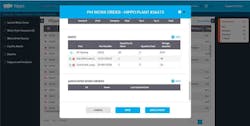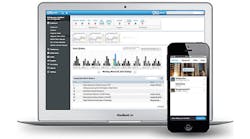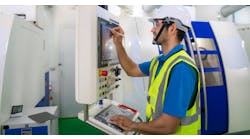As manufacturing businesses grow in size and complexity, owners and managers are feeling pressure to keep pace with industry trends and respond to economic demands. As a result, they are seeking better ways to operate smarter, faster and leaner. This means businesses are aiming for greater profits and higher return on investments that result from extended equipment lifespans, better time-management, and labor utilization.
Businesses have come to realize that conducting maintenance tasks that were previously managed by “pencil and paper” or spreadsheet approaches are falling short of obtaining these goals. Let’s look at the state of maintenance management before and after the introduction of CMMS systems, to see how they have transformed the way large and small manufacturers conduct maintenance operations.
Over the past two decades Computerized Maintenance Management Software (CMMS) systems have been increasingly adopted as the maintenance-management solution for companies representing a wide range of industry, service, and corporate sectors. They have the ability to monitor inventory levels, track work orders, quickly generate accurate reports, and most importantly, they can determine instantly which company assets require preventive maintenance (PM). It is this latter feature involving ongoing and routine scheduled equipment checks that forms the epicenter (and most valued aspect) of a CMMS software.
Most would agree that moving beyond reactive maintenance (i.e., addressing repairs as they arise) and toward preventive maintenance is preferable, because the former results in unexpected operation shutdowns and/or costly equipment replacement due to failure. In spite of this, there are many who still question whether the change to an automated maintenance-management system is really worth the effort and cost.
Traditional maintenance-management approaches — To fully appreciate what maintenance management looked like before the evolution of CMMS, let’s begin by reviewing the capabilities of spreadsheets when guiding companies’ maintenance activities.
Limited computational ability. Spreadsheet methods, whether done manually or using software such as Apple Numbers, Lotus 123, Microsoft Excel or Google Sheets, provide a limited range of analyses based on data input. While capable of storing equipment and stocking inventories, these programs offer basic computations that are most useful for bookkeeping and inventory control purposes or when making sales projections.
No real-time tracking/updates. They do not have the ability to address manufacturers’ specific maintenance needs, such as alerting maintenance managers to equipment that needs service or preventive maintenance, tracking work-order progress, ordering parts or real-time, and paperless access for multiple users, to list a few.
Increased costs and reduced productivity. Because these systems do not have the ability to send alerts or reminders regarding work orders in progress, that job is left to maintenance managers. Similarly, implementing routine equipment checks is something maintenance managers also must do themselves.
Given these constraints, repairs generally are done on an as-needed basis, with additional maintenance costs associated with time, resource, and staff allocations. The absence of an automated PM program does little to prevent critical equipment breakdowns that could prolong their performance life. This is where spreadsheet approaches have been found to be most wanting.
Pre-automated maintenance-management systems relied on maintenance technicians completing work orders on paper and waiting for the appropriate source to retrieve and process them. The same was true for ordering parts or supplies. Using spreadsheet systems, maintenance tasks must be documented on paper along with time-consuming tasks that involve storing them, and then manually entering any relevant information into a spreadsheet.
The evolution of CMMS — Automated maintenance-management software is relatively new, making its presence about 50 years ago.
From on-premise to cloud CMMS. To begin with, wireless and cellular access was nonexistent, so the use of CMMS was limited to large punch0card computers. Given the cost of the equipment and the expertise needed to run them, these early systems were largely attractive to only very large companies.
As computer-networking capabilities emerged, CMMS evolved as well. They were then available on intra-facility networks and could be accessed using desktop computers. When wireless and cellular technologies came along, cloud-based CMMS formats made their debut. Another recent innovation in the software is mobile access, which makes it possible for system users to place work orders, order parts, and track progress remotely.
Finally, the introduction of preventive-maintenance programming represented a quantum leap in facility management by making it possible to conduct regular maintenance checks while equipment was still functioning, and during a time that posed least disruption to a manufacturer’s production cycle. All of these developments have made the newest CMMS versions more attractive to businesses of every sizes and from all sectors.
Maintenance management today. The maintenance-management experience today is very different from that of spreadsheet users or early CMMS versions.
Automation. Once implemented, these systems automate all maintenance-management tasks and generally involve no more effort from users than a click or tap on the device being used. Maintenance technicians are no longer weighted down by paperwork because all work and parts orders, job tracking, and other communications are done electronically.
Mobile access. Mobile access with camera and barcode scanning capabilities free technicians to work wherever they may be, while saving time and reducing errors.
Customizability. Finally, one of the greatest benefits of today’s CMMS reside in their ability to adapt to an organization rather than an organization having to adapt to the system. This means they are able to meet the individual needs of businesses large and small, and with differing numbers of assets, users, sites and preventive maintenance requirements. Most important, they also have the ability to adjust to the changing needs of organizations as they grow and reformulate.
Changes in technology, the marketplace, and the economic climate all have given rise to the evolution of CMMS as a preferred maintenance-management solution. By contrasting maintenance-management approaches before and after their introduction, it is possible to see how these software systems are helping thousands of manufacturing businesses to keep pace with ever-tightening profit margins and increasing economic and industry demands.
Reena Sommer is a Houston-area writer. She holds a Ph.D. in Psychology, Sociology, and Family Studies from the University of Manitoba.










